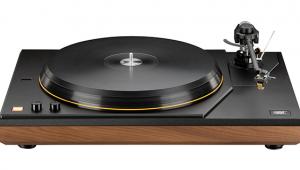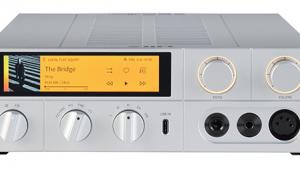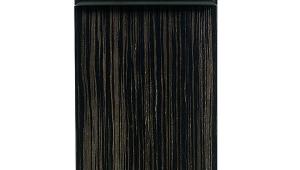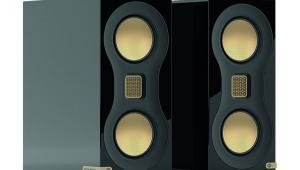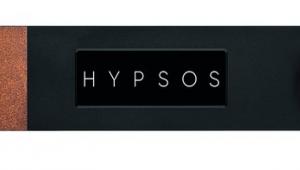SME Model 15 MK2

 SME’s rollout of MK2 models – all benefitting from lessons learnt in the development of its flagship Model 60 turntable – has reached the Model 15, tested here with 309 arm
SME’s rollout of MK2 models – all benefitting from lessons learnt in the development of its flagship Model 60 turntable – has reached the Model 15, tested here with 309 arm
SME’s development of its formidable flagship Model 60 turntable, released a couple of years ago [HFN Jul ’22], continues to influence designs lower down the UK manufacturer’s range. All are being upgraded to MK2 status, the latest being the Model 15. On test here, retailing for £12,067 with pre-fitted SME 309 tonearm, this deck is also the most affordable in SME’s lineup with a proper suspended subchassis.
The Model 12 MK2, priced £10,475 with 309 arm, and the £19,539 Synergy MK2 also have two-part chassis, but there are polymer isolators between the layers. The result is good isolation, but very little ‘give’ in use. The Model 15 MK2, however, has a true suspension system thanks to its predecessor’s origins: at first intended to be an uprated Model 10 when introduced in 2015, the Model 15 evolved during the design process to leverage rather more from the bigger Model 20.
Worry-free
SME’s way of doing things may come as a bit of a surprise to those used to turntables with a conventionally sprung subchassis, these often requiring regular fettling on an almost Ferrari-esque level, such is the faff of adjustment from underneath. But if this puts you off a suspended design, then worry not because the Model 15 MK2 is very user-friendly. From unpacking, all that’s required is to first undo the seven transit screws – one on the underside of the motor, two that bolt through the sub-platter and require complete removal, and four captive screws that are accessed through the same sub-platter and need to be turned until they reach their end stops.
Vibration immunity is provided by the Model 15 MK2’s three suspension towers, each with ten black elastic rings, from which the subchassis hangs, plus a central fluid damper under the main bearing. Setting of the suspension involves removing the top cover of each tower and adjusting a central 3mm bolt with a supplied Allen key. The target is a 3.5mm gap between the underside of the upper chassis and the top of each suspension column base.
If the turntable is going to be sat close to loudspeakers, SME recommends reducing this gap to 2mm, lowering the subchassis bearing block further into the central damping oil bath for better isolation, but that’s it. The manual also recommends checking the chassis height after a day or so, allowing for the suspension bands to settle – I did so and it hadn’t budged at all, and no further adjustment was needed during my extended auditioning.
Finding Lemo
The Model 15 MK2’s sub-platter rotates on a 19mm high-chrome tool steel spindle, supported in a sealed housing with sintered bronze bushes, and is belt driven from the new AC motor type that is common to the Model 60 and all of SME’s MK2 decks. Power to this is derived from separate transformer and speed control units, linked by silver Crystal Cable interconnects fitted with high specification locking LEMO connectors.
CNC-machined aluminium billet is used for the deck’s subchassis and main chassis, while the platter is also an aluminium alloy, weighing in at 4.6kg and with a diamond-turned ‘iso-damp’ surface. A plastic washer drops over the spindle to sit under the record, and then a reassuringly chunky clamp screws on top (the spindle is threaded).
Machining of the clamp and spindle is first-class and it’s a pleasure to use, with no fear of inadvertent cross-threading. However, the clamp shares an issue I found on the Model 12 MK2 – its size means it’s possible for the inside of the arm to make contact with it when in the runout groove of a 7in single. Be warned!
The 309 tonearm is a tried-and-tested quantity – I’ve used one for over 15 years and it has featured in many HFN reviews. It has a single-piece machined magnesium armtube, with internal constrained layer damping, and a detachable magnesium headshell held firmly in place by a clamp. Although adjustments are a little more ‘manual’ than on an SME V, and usually require the services of the supplied Allen key rather than turning a dial or a direct ratchet, it’s still not taxing to set up. As per the Model 12 MK2, the internal wiring is all from Crystal Cable, and is routed out via a new rear-facing terminal box with phono sockets.
As alternative options, the Model 15 MK2 can also be ordered without arm (for £10,719), or with an SME Series IV (£15,068) or a Series V (£17,098). The only current colour option is black.

The Model 15 MK2’s lower chassis is supported on three large, adjustable, polymer-damped feet while the upper chassis, bearing, platter and arm all ‘hang’ from elastic-tensioned suspension towers
A Little Bit More
With a Clearaudio MC Essence pick-up installed in the 309, the Model 15 MK2 swiftly established itself as a ‘typical SME deck’, its clean and insightful sound issued while also suppressing any obvious groove noise. When the music does start, it appears out of a blemish-free background. SME decks often seem to have a more extensive dynamic range than most other turntables, and this latest design is no exception.
It’s perhaps not surprising that the Model 15 MK2 bears a strong sonic resemblance to its smaller brother, the Model 12 MK2. That was a deck that captivated me on audition, but its pricier sibling seems to offer that little bit more in most areas. Bass has more refinement, treble is a little crisper and the ’15 MK2 definitely adds width to the soundstage.
Add all this together and the results are delightful. Rory MacDonald’s vocals on Runrig’s ‘Somewhere’, from their album The Story [Ridge Records RR079], arrived with their inflections and emotional impact intact, and their ‘presence’ locked precisely centre stage. Towards the end, when the Prague Philharmonic Orchestra’s strings get into their stride, the soundscape swelled and soared.
Rich Pickings
The Model 15 MK2 also turned out to be accomplished at capturing the essence of whatever vinyl LP I cared to throw at it, striding through the gloom and finding gold at the bottom of ancient, worn or just poorly cut grooves. I’ve heard only a handful of turntables successfully navigate the sonic quagmire that is Gary ‘U.S.’ Bonds’ Dedication LP [EMI AML 3017], but the Model 15 MK2 did it with ease.
My favourite track, an upbeat take on the country staple ‘Jole Blon’, has rarely sounded so accessible, with the energetic backing of the E Street Band richly defined behind Bonds’ well-projected vocals.
If you have un-played records languishing in your collection because they really don’t sound all that great, then the Model 15 MK2 might well be your knight in shining armour. Of course, the concomitant upside is that, with high-quality recordings/pressings, it absolutely sings. Melody Gardot’s ‘Les Etoiles’ [My One And Only Thrill; Verve 1796787] was a joy, her singing husky and lifelike, while the backing double bass had a firmness and resonance that left no doubt that real strings and a wooden body were the order of the day. An alto saxophone, spotlit for a brief solo, seemed large as life.










